Kitchens evolve just like fashion—and what once felt cutting-edge can now make your space look dated. In 2025, designers and homeowners alike are leaning into warmer tones, smarter layouts, and more sustainable materials. That means it’s time to say goodbye to some long-standing staples that no longer serve today’s aesthetic or functional needs. If your kitchen still features any of these, it might be time for an upgrade.
1. Over-the-Range Microwaves
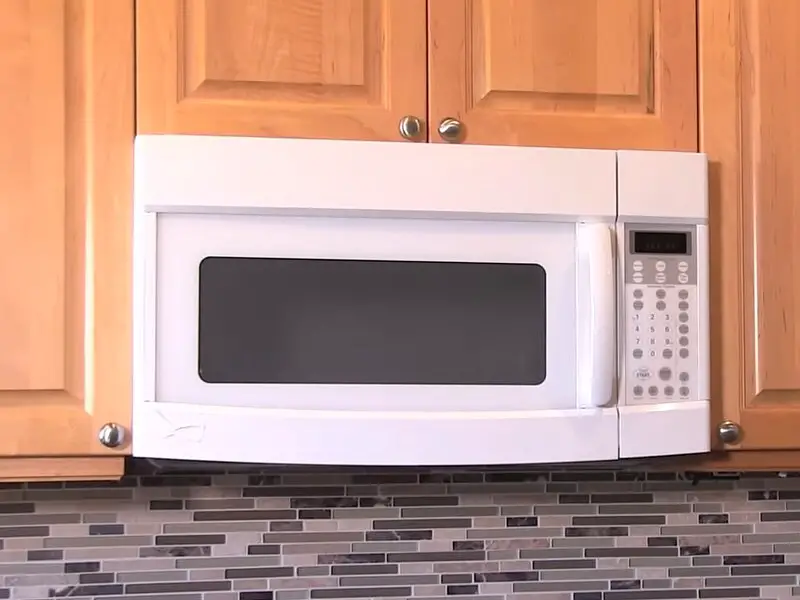
Once a space-saving solution, over-the-range microwaves are now seen as outdated and impractical. Designers note that they disrupt the kitchen’s visual flow and can be challenging to access, especially for shorter individuals or children. According to The Spruce, homeowners are opting for alternatives like microwave drawers or built-in units placed at more ergonomic heights. This shift enhances both the functionality and aesthetics of modern kitchens.
Moreover, relocating the microwave allows for the installation of a proper range hood, improving ventilation and cooking efficiency. This change aligns with the broader trend of creating kitchens that are both beautiful and highly functional. As kitchen design continues to evolve, integrating appliances seamlessly into cabinetry is becoming the norm. It’s a move that reflects the desire for cleaner lines and a more cohesive look.
2. All-White Kitchens

The all-white kitchen, once a symbol of modernity and cleanliness, is losing its appeal. Designers like Sofia Bune, founder of Sola Kitchens, observe that homeowners now crave more personality and warmth in their spaces. As reported by Livingetc, incorporating earthy tones and natural materials like wood and stone adds depth and character. This transition reflects a broader move towards more inviting and personalized kitchen designs.
While white elements can still play a role, they’re now often balanced with contrasting colors and textures. This approach prevents the space from feeling sterile and instead creates a more dynamic and lived-in atmosphere. It’s about striking the right balance between brightness and warmth. As a result, kitchens feel more like the heart of the home rather than a clinical workspace.
3. Open Shelving

Open shelving was once celebrated for its airy feel and display potential. However, as Forbes notes, the practical challenges—like dust accumulation and the need for constant organization—have led many to reconsider. Designers now favor closed cabinetry that conceals clutter and maintains a tidy appearance. This shift caters to the desire for kitchens that are both stylish and easy to maintain.
That said, open shelving isn’t entirely obsolete. Some homeowners still incorporate a few open shelves to showcase select items like cookbooks or decorative pieces. The key is moderation and thoughtful placement. By limiting open shelving, you can enjoy its aesthetic benefits without compromising on functionality.
4. Granite Countertops
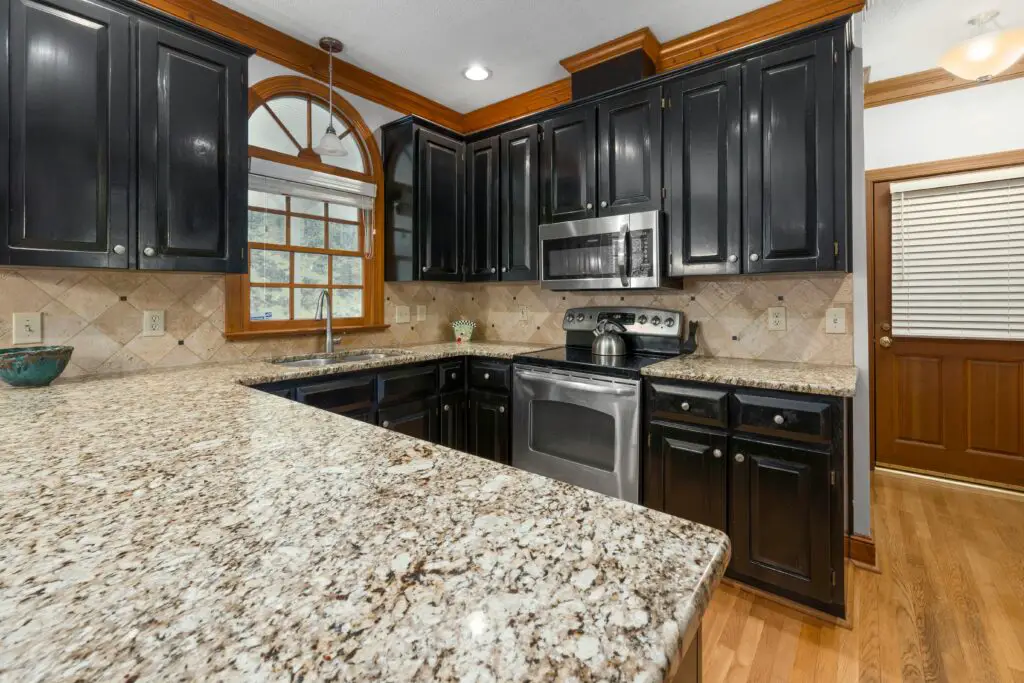
Granite countertops, particularly in darker shades, are falling out of favor. As reported by The Spruce, these surfaces can make kitchens feel heavy and dated. Homeowners are now gravitating towards lighter materials like quartz, which offer a more contemporary look and easier maintenance. This change reflects a broader trend towards brighter and more inviting kitchen spaces.
Quartz countertops not only provide aesthetic appeal but also boast durability and low upkeep. Their non-porous nature makes them resistant to stains and bacteria, enhancing kitchen hygiene. Additionally, the variety of available patterns and colors allows for greater design flexibility. It’s a practical and stylish choice for modern kitchens.
5. Tuscan-Inspired Decor

The rich, earthy tones of Tuscan-inspired kitchens—think deep reds, golds, and ornate details—are now considered outdated. This style, once popular for its warm and rustic charm, can make spaces feel heavy and dated. Modern design trends favor lighter color palettes and streamlined aesthetics. By moving away from Tuscan themes, kitchens can achieve a more timeless and versatile look.
Incorporating neutral tones, minimalist cabinetry, and subtle textures creates a fresh and open atmosphere. This approach not only modernizes the space but also allows for easier updates in the future. It’s about creating a kitchen that feels both current and adaptable. Letting go of the Tuscan trend paves the way for a more contemporary and inviting culinary space.
6. Overly Ornate Cabinetry
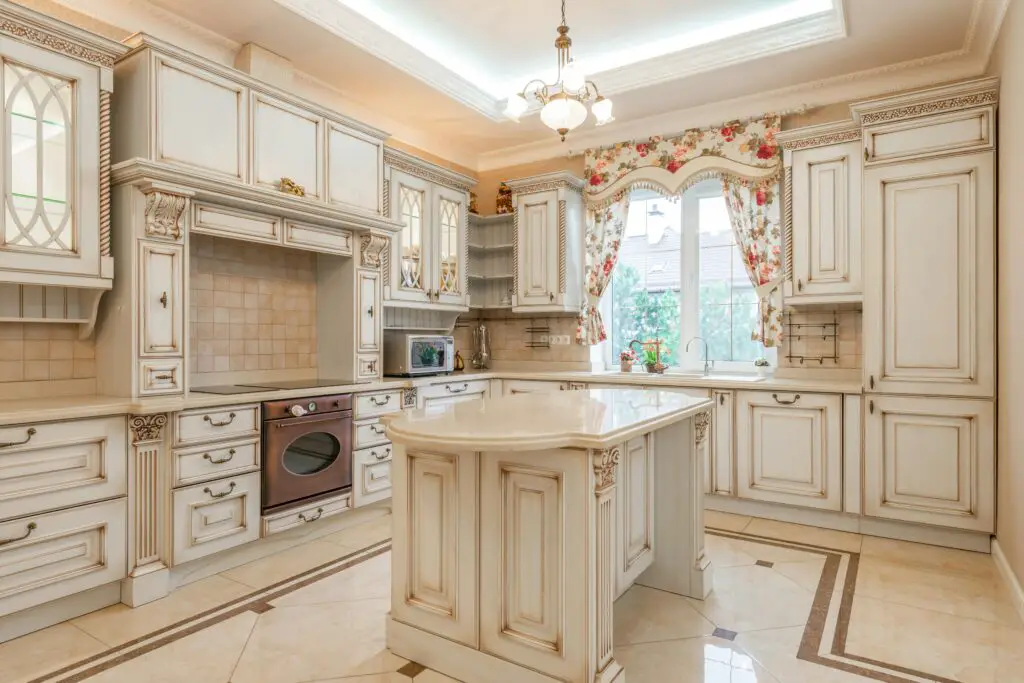
Cabinetry with intricate carvings and heavy embellishments is becoming less desirable in today’s kitchen designs. Such ornate details can make the space feel cluttered and dated. The current preference leans towards clean lines and minimalist styles that offer a sense of calm and sophistication. This shift aligns with the broader trend of simplifying interiors for a more modern appeal.
Opting for flat-panel or shaker-style cabinets can instantly refresh the kitchen’s look. These designs provide versatility and can easily adapt to various decor themes. Additionally, simpler cabinetry often allows for more creative freedom with hardware and accessories. Embracing minimalist cabinetry contributes to a timeless and elegant kitchen environment.
7. Glossy Finishes

High-gloss finishes on cabinets and surfaces, once synonymous with modernity, are now viewed as impractical and dated. They tend to show fingerprints and scratches easily, requiring constant maintenance. Designers are now favoring matte or textured finishes that offer a more subdued and sophisticated look. This transition reflects a desire for materials that combine aesthetics with functionality.
Matte finishes not only conceal smudges better but also add depth and warmth to the kitchen. They pair well with a variety of materials, allowing for greater design flexibility. By moving away from glossy surfaces, kitchens can achieve a more contemporary and inviting ambiance. It’s a practical choice that doesn’t compromise on style.
8. Builder-Grade Lighting

Standard builder-grade lighting fixtures, often characterized by their basic designs and lackluster materials, are falling out of favor. These fixtures can make a kitchen feel uninspired and generic. Homeowners are now investing in statement lighting pieces that add character and elevate the space. This change underscores the importance of lighting in setting the kitchen’s tone and ambiance.
Upgrading to pendant lights, chandeliers, or unique sconces can dramatically transform the kitchen’s appearance. These fixtures not only provide better illumination but also serve as focal points that reflect personal style. Choosing quality lighting enhances both the functionality and aesthetics of the kitchen. It’s a worthwhile investment that pays dividends in daily enjoyment and long-term value.
9. Glass Mosaic Backsplashes

Glass mosaic backsplashes, once a popular choice for adding color and texture, are now seen as dated. Their busy patterns can overwhelm the space and clash with other design elements. Current trends favor simpler, more cohesive backsplash designs that complement the overall kitchen aesthetic. This shift reflects a move towards understated elegance in kitchen decor.
Subway tiles, natural stone slabs, or even single-color ceramic tiles are now preferred for their timeless appeal. These options provide a clean backdrop that allows other features to shine. By choosing a more subdued backsplash, homeowners can create a harmonious and balanced kitchen environment. It’s a subtle change that makes a significant impact.
10. Stainless Steel Appliances
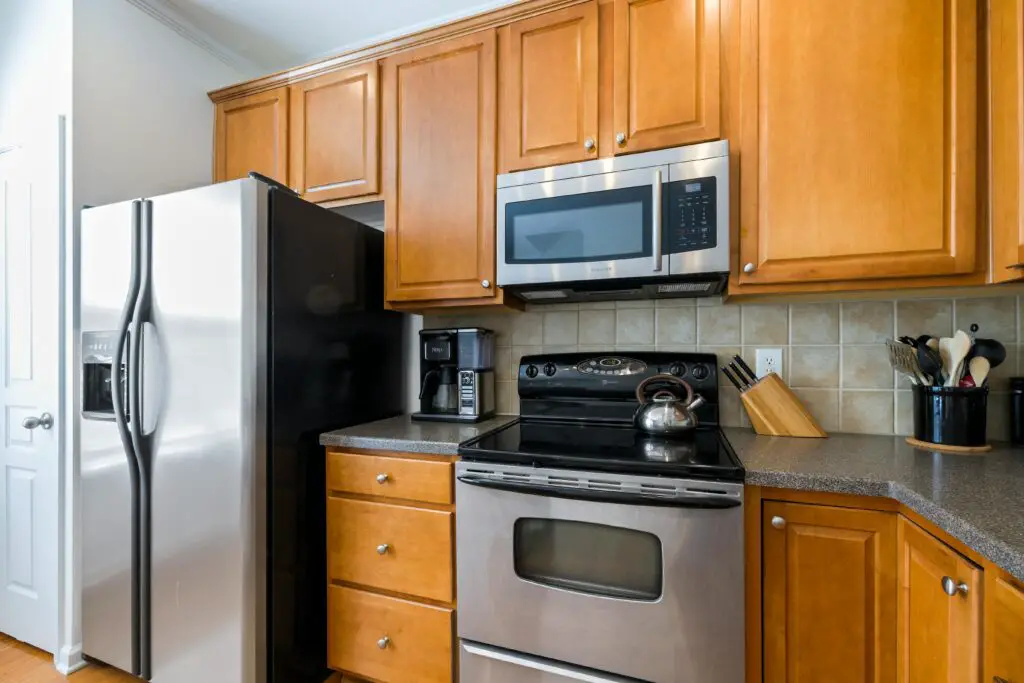
Stainless steel appliances have long been a staple in modern kitchens, but their dominance is waning. They can impart a cold, industrial feel that clashes with the warmer, more personalized designs now in vogue. Homeowners are exploring alternatives like matte finishes, black stainless steel, or even custom paneling that blends appliances seamlessly with cabinetry. This trend reflects a desire for kitchens that feel cohesive and inviting.
Integrating appliances into the overall design creates a streamlined look that enhances the kitchen’s aesthetic. It also allows for greater flexibility in choosing colors and materials that align with personal tastes. Moving away from stainless steel opens up new possibilities for creative and harmonious kitchen designs. It’s a step towards a more customized and comfortable cooking space.
11. Two-Tiered Kitchen Islands
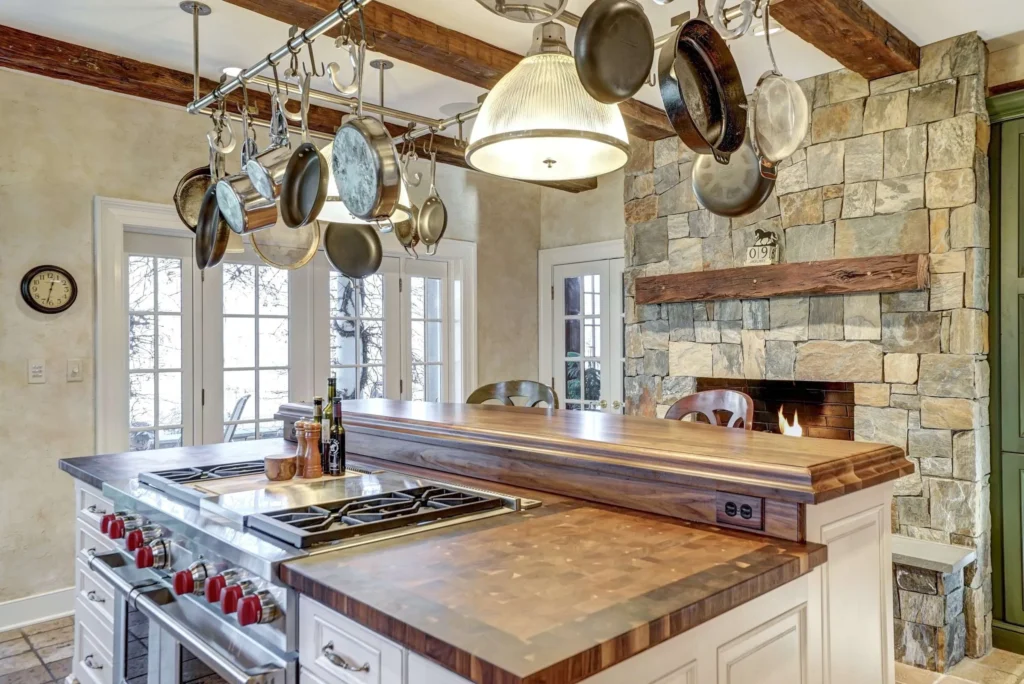
Two-tiered kitchen islands, designed to separate cooking and dining areas, are becoming less popular. They can disrupt the visual flow and limit the island’s functionality. Modern kitchens favor single-level islands that offer expansive surfaces for food prep, dining, and socializing. This design promotes openness and versatility in the kitchen layout.
A flat island surface also enhances accessibility and encourages interaction among family and guests. It serves as a multifunctional hub that adapts to various needs, from casual meals to homework sessions.
12. Pot Racks Hanging from the Ceiling
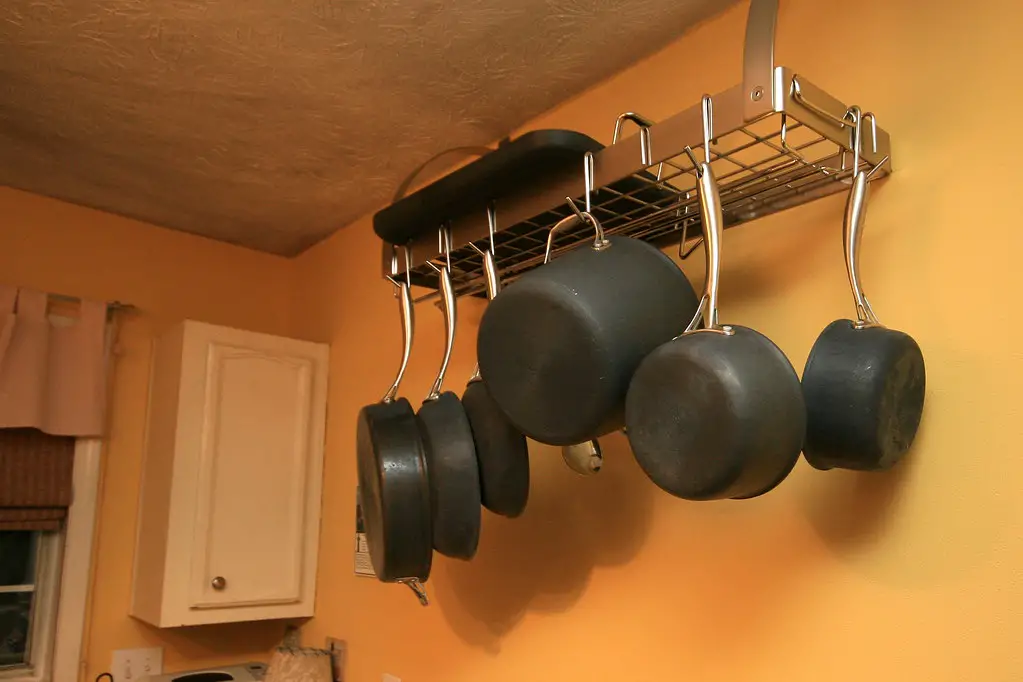
Once a staple in farmhouse and country-style kitchens, overhead pot racks are now widely considered outdated. While they offered convenient storage and rustic charm, they often make kitchens feel cluttered and cramped—especially in smaller or more modern spaces. Designers now emphasize clean sightlines and open airspace above kitchen islands. Eliminating bulky ceiling racks is part of that broader trend.
Instead, homeowners are opting for concealed storage solutions, such as deep drawers and custom cabinetry designed for pots and pans. These approaches maintain functionality without sacrificing style. Removing a hanging pot rack can instantly modernize a kitchen and create a more streamlined, open environment. It’s a small change that makes a surprisingly big difference.
13. Appliance Garages
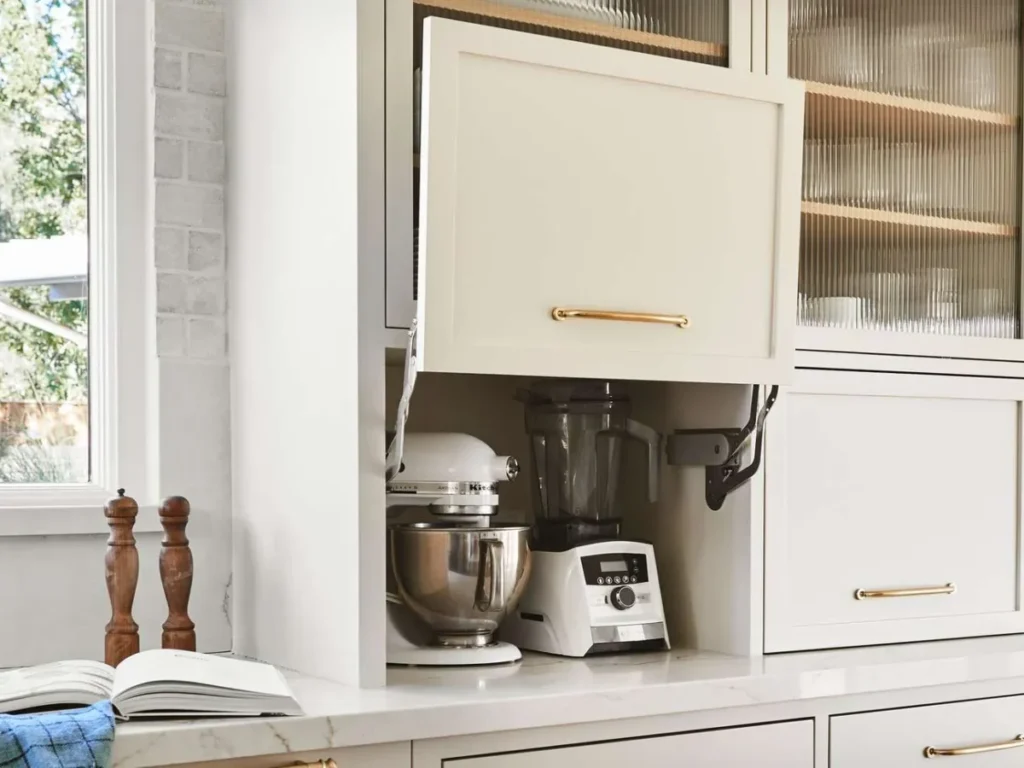
Once considered clever solutions for hiding countertop clutter, appliance garages are now more of a relic than a revelation. These little roll-top or cabinet-style compartments were designed to conceal toasters, coffee makers, and other gadgets. But in modern kitchens that emphasize sleek lines and open space, they interrupt the flow and can feel bulky or awkward. Plus, many homeowners ended up just leaving the doors open all the time anyway.
Today’s trend leans toward truly integrated solutions—like built-in coffee stations or dedicated pantry shelves that keep appliances out of sight but easy to access. With minimalism on the rise, people prefer streamlined surfaces and fewer moving parts. Appliance garages simply no longer align with the way we actually use our kitchens. If you’re still hanging onto one, it might be time to let it go.
